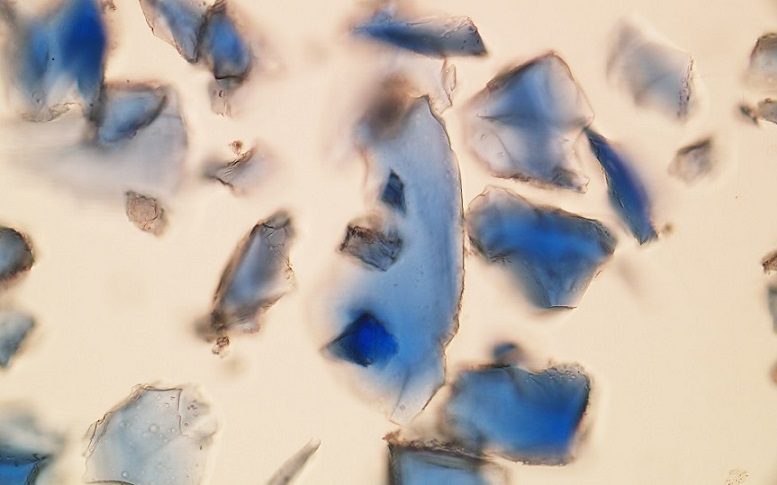Types of Historic Paint Analysis: 5 Common Techniques & When They’re Appropriate
A historic paint analysis and finishes investigation is undertaken to help identify finishes in historic structures.
The analysis uncovers the layers of history, from the original paint application through all of the alterations that followed. The analysis can be performed on a variety of a historical structure’s different architectural elements (plaster, wood, metal etc.) and reveal a variety of finishes including paint, varnish, and metallic leaf. This process usually involves some archival research for historic materials, on-site investigation, scientific analysis, and the creation of a final interpretation report.
There are a number of paint analysis techniques commonly used during a historic paint analysis, which we explore in detail below so that you can better understand the various ways in which it is possible to coax a building’s history out of the past.
1. Finish Exposures Reveals Hidden Historic Details
Finish exposures are performed by carefully removing over-paint in order to reveal historic colors and patterns. This can be done mechanically and/or with chemical strippers.
Historic information that has been gathered during the archival research process of a historic paint analysis and finish investigation can assist in identifying areas for exposure. The photographs, articles, past structure reports or other information gathered during the research phase become a guide. The size of the area of exposure can vary depending on what is uncovered, what the overall plan is and how much of a decorative scheme needs to be revealed. Sometimes once a historic decorative scheme has been discovered, smaller exposures are done in other areas, to see if that same decorative schemes are elsewhere.
This technique is best used when wanting to uncover potential hidden artwork or patterns, and will often tell us the whole story of a historic decorative scheme.


2. Optical Microscopy Aids in Understanding Paint/Finish Layers in Context
Optical Microscopy refers to the visual inspection of a collected paint sample under a variety of magnifications. It allows for the detection of the various pigment grain sizes, and also provides a visual of the layers of paint and finishes from the sample.
Optical microscopy is a standard analysis that provides a good base understanding of the layers of paint, varnish and any other buildups that have occurred through the years. That being said, it might not make the identification of fine details possible, and for that reason is often paired with other forms of analysis.


3. Fluorescent Microscopy Aids In Identifying Specific Pigments and Substances
One of the most common techniques used in a finishes investigation of paint analysis is fluorescent microscopy, as fluorescent microscopes are standard equipment and can provide very useful information.
Fluorescent Microscopy allows the examination of autofluorescence of individual paint layers. Using ultraviolet light and filters, cross section samples can be examined to reveal and distinguish the layers. Different materials have characteristics that react uniquely to ultraviolet light, which in turn allows for easier identification of layers in stratigraphies and the history of the paint sample than the standard optical microscopy.


4. Polarized Light Microscopy (PLM) Aids in Identifying Colors and Finishes
Polarized light microscopy is another common technique used when identifying pigments is necessary. It involves analyzing very small paint chip samples of finish layers (right down to, and including, the substrate, so nothing is missed) and examining the cross sections for colors and material characterization.
PLM is best used to help determine the paint colors, architectural finishes, and to show finish stratigraphies under different kinds of light and reveal the presence of different materials for the existing layers.


PLM of Azurite Pigment Provided by Williamstown Art Conservation Center, Inc.
5. Fourier Transform Infrared Spectrometry (FTIR) Aids in Selecting the Right Solvent
Infrared spectrometry is useful for the identification of both organic and inorganic compounds. Fourier Transform Infrared Spectrometry is used to determine the type of paint (chemicals, pigments, etc.) by analyzing the way in which its various components absorb infrared light.
The FTIR technique is useful for analyzing the chemical composition of smaller particles as well as larger areas on the surface. FTIR can be best used for the analysis of materials to aid in the choice of the optimum solvent needed to selectively remove certain coatings while leaving others unaffected.


FT-IR Spectra Provided by Williamstown Art Conservation Center, Inc.
Knowing When to Contact a Professional
When it comes to conducting a historic paint analysis of finishes investigation, most professionals will use a combination of techniques in order to identify finishes as precisely as possible.
Though in some cases a simpler analysis may be sufficient, a more comprehensive analysis can be useful when knowing the composition of the paint is necessary to identify the cause of failures, or when it is necessary to determine the best cleaning agents for historic preservation and conservation purposes so that original decoration does not get destroyed.
If you are unsure about the steps you should be taking and what the best techniques are to use for your historic paint analysis is, it is best to consult a conservator. John Canning & Co. has decades of experience in paint analysis. If you are in need of professional services, we would be happy to help. It is just one of the many services we offer.
